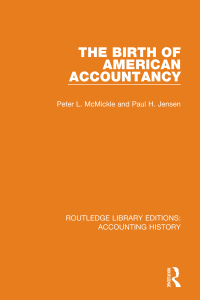Question
Question: Identify a problem or an issue related to economic growth and test it empirically. Elaboration: 1. You can consider any issue related to economic
Question: Identify a problem or an issue related to economic growth and test it empirically.
Elaboration:
1. You can consider any issue related to economic growth that has been covered in this course, or otherwise. It might be testing for convergence, growth accounting exercise, how international trade affects economic growth for India, there are several possibilities.
2. The main part of this exercise is the empirical testing of the issue/claim of a model etc. You are free to use your imagination as far as data analysis is concerned. It can be graphical, correlation analysis, OLS estimation, or any other method that is relevant. It is not expected that you do a panel data analysis/endogeneity testing etc. since these might not have been covered in Econometrics I
. 3. You are allowed to replicate any existing work, published works would be preferred rather than working papers (goes without saying that it has to be cited properly). However, you would have to change at least one component of the existing work, like the sample period, or the set of countries considered. For instance, you can test the equation in Mankiw, Romer and Weil (QJE, 1992), but it has to be for a different year or for a different set of countries.
4. The findings should be presented in the following format, not exceeding 3 pages, excluding the reference section (Times New Roman, Font size 12, 1.5 spacing)
. a. Title of the work
b. Objective- what is being tested here. Use bullet points instead of a paragraph.
c. Justification- why do you think this particular factor might be related to economic growth? You might cite some existing works, models etc. If you are replicating an existing work, then mention how this work is different from existing work. Use bullet points instead of a paragraph.
d. Methodology- what is the equation being estimated, estimation method. Use bullet points instead of a paragraph. If you are replicating an existing work, mention that the equation is following, say, Mankiw, Romer and Weils equation # x in their QJE 1992 work.
e. Data- what is/are the data source/s. f. Findings- results are presented as graphs/tables/both. What do the results imply? If you have replicated an existing work, then indicate if the findings are same/different from that paper. Use bullet points instead of a paragraph.
g. Conclusion- quick summary of what has been tested and what are the findings. Use bullet points instead of a paragraph. h. References- all relevant citations, including the URLs. i. Work distribution among the members. It is to be mentioned as follows: A, B: conceived the idea of this work; B,C: carried out the regressions; A,C: analyzed the results and wrote the report, etc. Mentioning the work distribution is mandatory
h. References- all relevant citations, including the URLs.
Caveats
a. Economic growth is a long-run concept. So, the time period has to be likewise and a short sample of 5 or 7 years would be insufficient.
b. The explanatory variables of a growth equation are to be chosen carefully and cannot be picked randomly. You would find the literature related to your topic useful for this purpose.
c. If you do not get the expected results (say, you expect the coefficient of savings rate to be positive, but you get a negative coefficient), then mention this in your report. Recheck the data and the estimation method in case results are not in line. Often, we get results in empirical work that do not give significant coefficients, but that is still to be reported.
DO NOT MANIPULATE THE DATA TO GET THE DESIRED RESULTS.
Points would not be deducted for such results, unless it is due to negligence in data collation and/or incorrect estimation procedure. d. All works from which you have borrowed idea, have to be cited. Not acknowledging the sources is a serious academic offense and any group found to do so would get zero points for this part.
Please send the Excel file that contains only the relevant data that you have used (for instance, real GDP data of India 1960-2010, savings rate data for India 1960-2010 etc., in each column), along with the screenshot of the raw output of the estimation (STATA/R/Python/any other software)
Step by Step Solution
There are 3 Steps involved in it
Step: 1

Get Instant Access to Expert-Tailored Solutions
See step-by-step solutions with expert insights and AI powered tools for academic success
Step: 2

Step: 3

Ace Your Homework with AI
Get the answers you need in no time with our AI-driven, step-by-step assistance
Get Started


